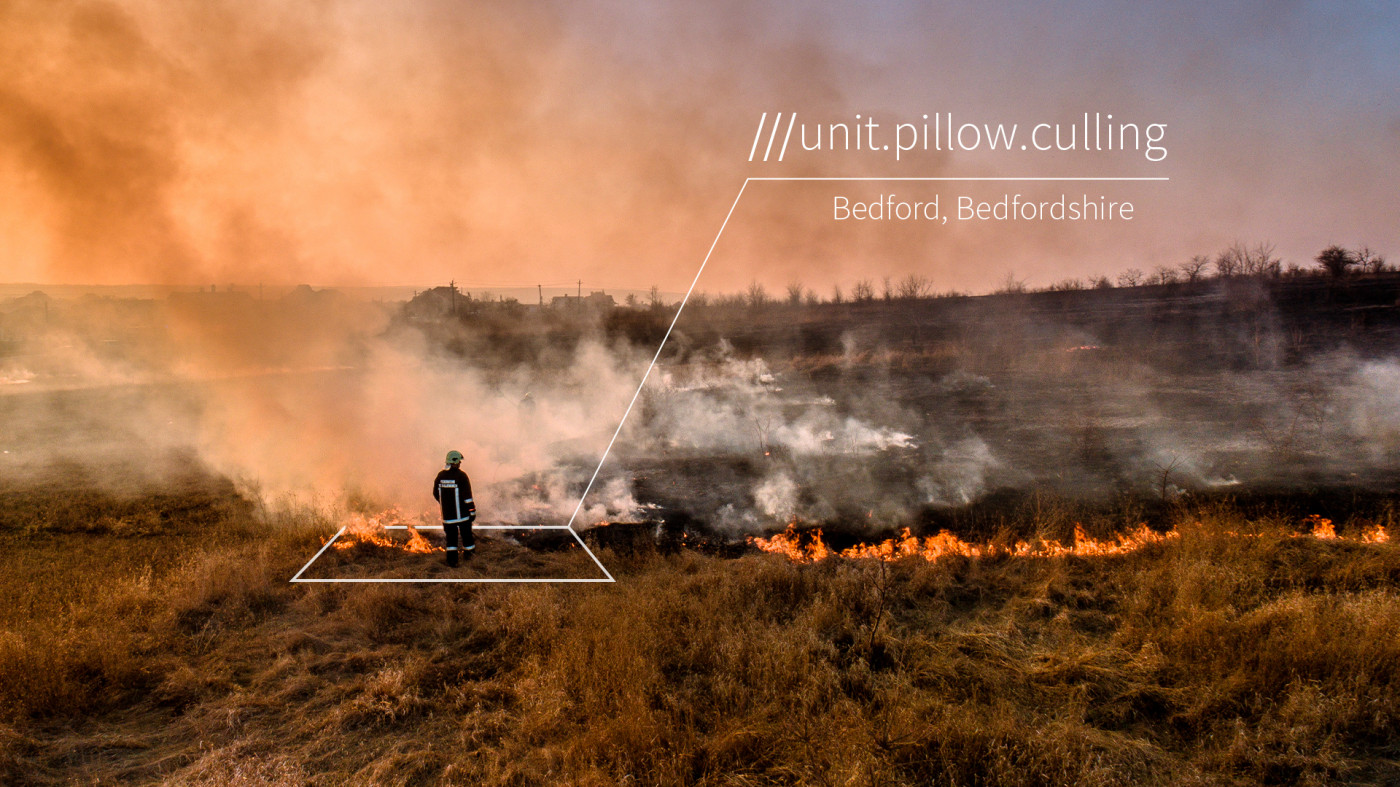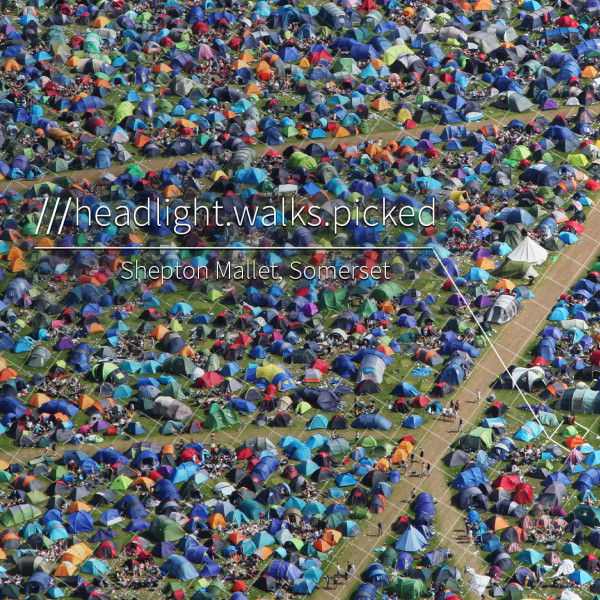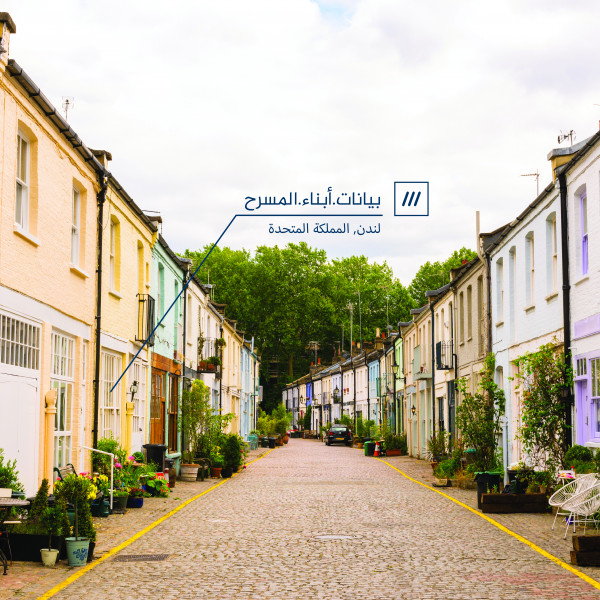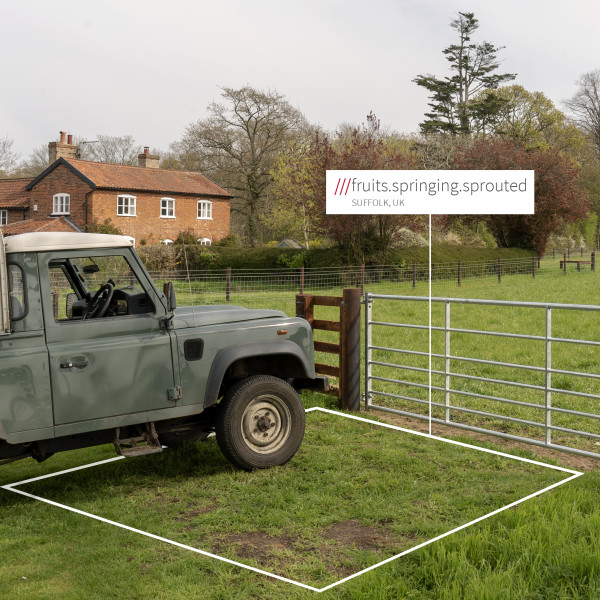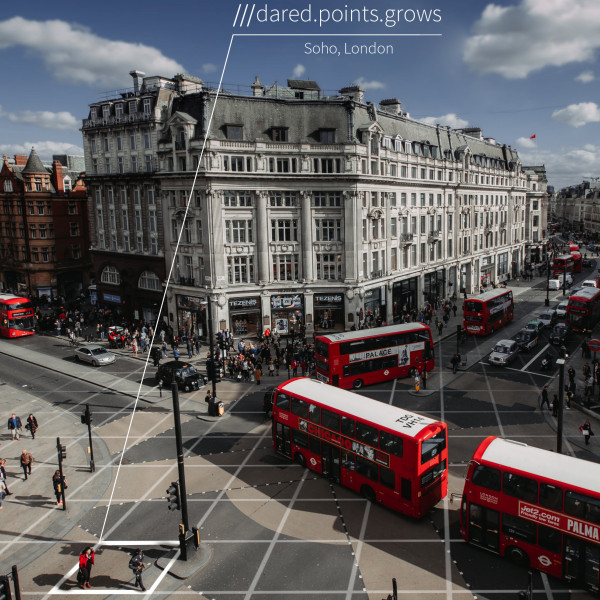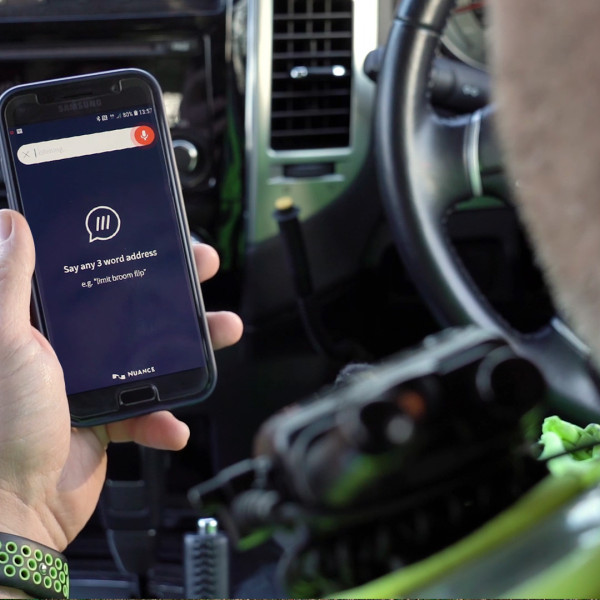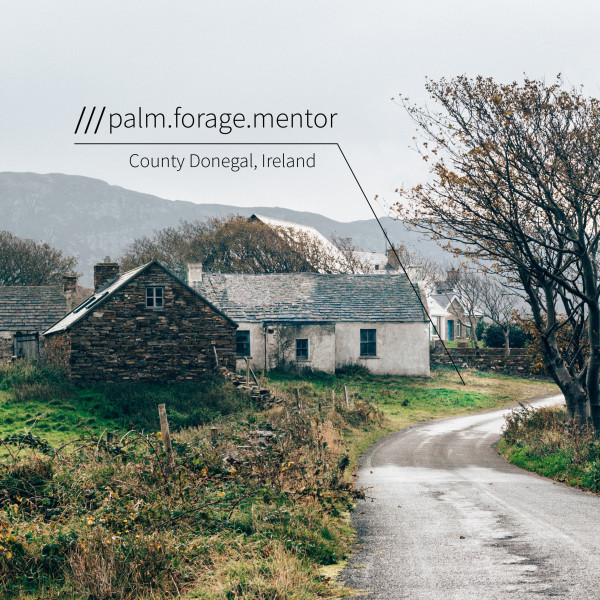Addressing: A problem
Alison: What was the initial problem that what3words was trying to solve?
Giles: Chris Sheldrick, our co-founder and CEO, worked in the music business, organising live music events around the world. He was regularly frustrated by the lack of decent addressing, after all, most music festivals happen in fields in the middle of nowhere, a logistical nightmare for bands, roadies, engineers, let alone the audience. And so he started using GPS coordinates, latitude and longitude. He thought: this will solve all my problems because they're universal, they cover everywhere, and they're super precise
But it quickly became apparent that they're both difficult to remember and communicate. For example, roadies would write down the 18 digit reference, but they might mix up a one and a seven. And so when they were reading it back later, they might end up going an hour north, instead of an hour south. It was a major problem.
One day he was bemoaning this fact to a friend, who happened to be a mathematician, and they decided there had to be a better solution. So they started trying to work out what that might be. There happened to be a dictionary on the table, and one of them asked the question: "What happens if we actually use words to do this?"
Literally, on the back of an envelope, they worked out that they would need 40,000 words, because 40,000 cubed gives 64 trillion different combinations.
And then they worked it out that if they cut the world into three-metre squares that would be 57 trillion three metre squares.
So they would have enough to cover the entire planet, every single three metre square would have a unique code made from these three words.
Three’s not a crowd. It’s spot on.
Giles: Three metres by three metres is small enough to be useful. It's about the size of a car parking spot, so it's pretty easy to identify things in there. If you go any smaller, you actually need many more words, and you have many, many, many more squares. Any bigger, then actually it doesn't become particularly useful. So three metres by three metres seemed to be the perfect size for a solution like this.
Alison: How do you pick the three words?
Giles: It’s broadly random. But intelligently so. Every single word gets checked by a native speaker. They grade the word on a variety of different things. And then what we do with our algorithm, the equation puts shorter, more memorable, and more common words in places that speak that language. It also adds longer words in places that maybe wouldn't get as much use. The system is currently available in 48 different languages. So here in London in the UK we've got lots of short, memorable English words.
The other thing that we've done is we've worked hard to remove homophones. So words that are spelled differently but sound the same, like 'sail’ or ‘sale'. And then we've attempted to put similar sounding words actually quite far apart, or as far apart as possible. Remember, if you make an error with GPS coordinates you might not spot the error. You might be two or three miles away. With ours, if you make a slight error, it's 10 miles away, it's a thousand miles away — so it's much more obvious that you've made that error.
Of course, we're just one of the methods that people use to communicate location alongside GPS coordinates, landmarks, and Ordnance Survey grid references. But what we're finding is that many emergency services, in fact over 85% of the UK, currently accept what3words, are using the system successfully, which is incredibly humbling.
Access for all
Alison: What is the main benefit of using what3words?
Giles: Communication is the key thing. Because when you're in a high-stress situation, your ability to function and describe a location is hard. GPS coordinates are particularly hard. So people find that simply saying three words is an easier way to communicate.
Alison: I was in St Albans recently, sitting on a bench, whilst waiting for my husband to come out of a record shop. And an older person came past me. His wife said, "I'm going over here," and he replied, "I'll what3words you where I am." And I thought that was brilliant. Because it's becoming part of the vernacular, and a way of working out where you are in reference to each other, without all the rambling that accompanies trying to give directions or describe where we are.
In wayfinding, we have to work to a set of guidelines developed over a long period of time. For example, there was a lot of research done into wayfinding during motorway construction in the 1950s designers tested and created rules around contrast, and legibility. I'm one of those people who are interested in how those kinds of guidelines translate onto apps, and the web.
Alison: In terms of user accessibility, what were the standards you worked to as a part of setting up the app?
Giles: We do a lot of user testing with people who have got accessibility needs. And we're working with the RNIB to get the app accredited for use. The system is also being used by different venues to specify accessible entrances. And a lot of the TfL stations in London are using three word addresses to navigate people to a lift or ramp.
What we strive for, is to become the easiest and most accessible way to talk about location.
When you think about it, it’s probably one of the most accessible forms of address. The problem with postcodes, and street addresses is that they're too broad. And on pre-existing digital mapping, a pin will usually drop in the middle of a building.
However, when you need to find an accessible entrance, the ability to just say, read, or hear three words, for a more precise location makes it far more accessible. We’ve also developed a version of our site that actually reads the three words for you. You can also say the three words into the app, and it'll recognise it, or you can say it to your watch, or you can say it to your car.
As a business, we give a lot of our tech away free to emergency services and humanitarian organisations, but the way we make our money is by selling our code to businesses to build their own apps, and their own services. And actually, a lot of businesses have taken our Application Programming Interface (API) and code, and built us into their own system. So there are a variety of accessible, and accessibility apps out there using our code.
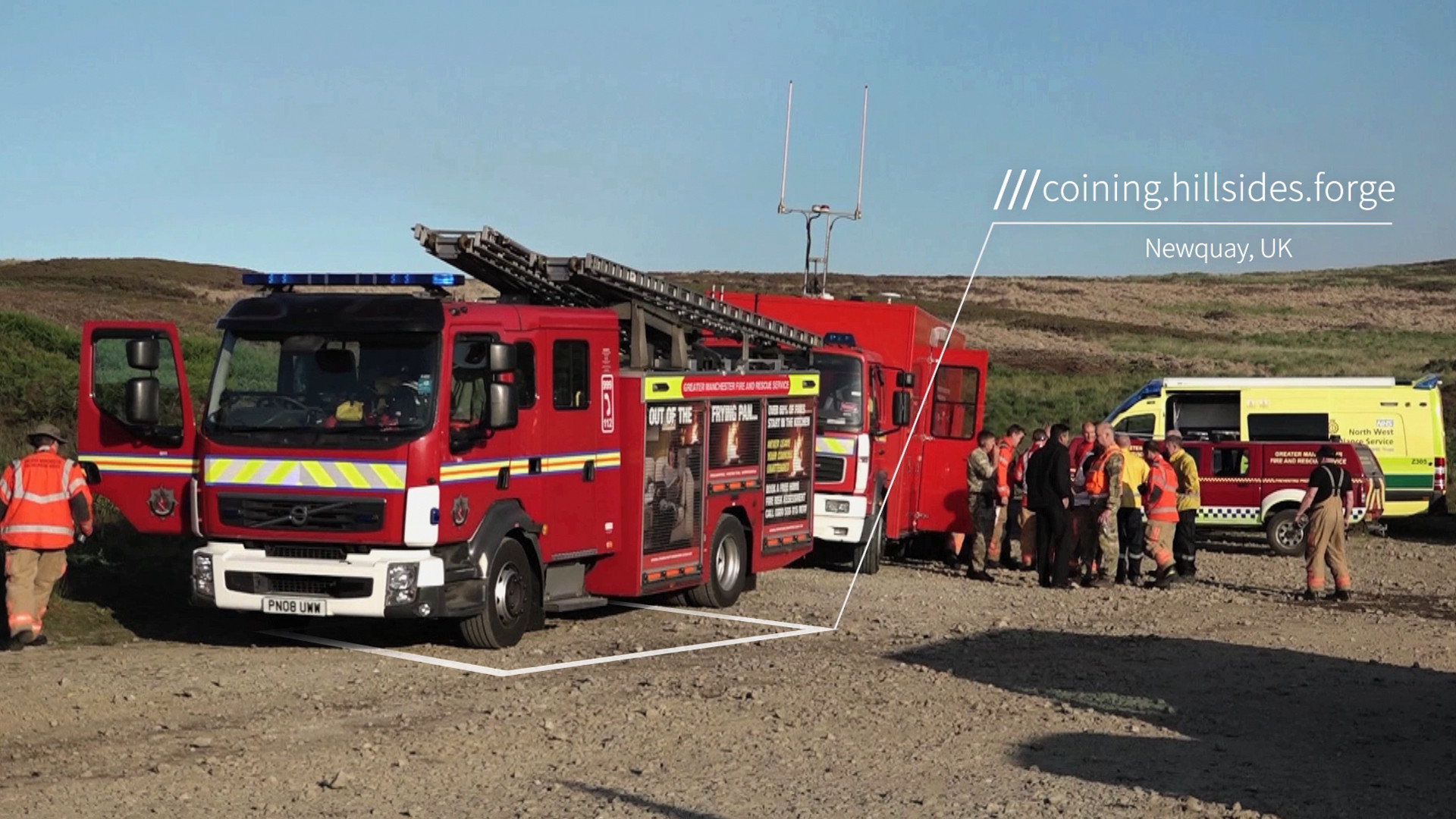
Anywhere. In three words.
Alison: What are some of the novel ways that people are using what3words?
Giles: Over the past seven years, pretty much all I’ve thought about is novel ways to use what3words! There are people who are using the app every day like runners, hikers, and photographers. We're being woven into plot lines in TV shows. Mushroom hunters love us! Someone named their gallery in France after their three word address, and there's a beer in America, which is a three word address of exactly where the beer comes off the production line.
Most recently someone tweeted that actually we're being used in Afghanistan to identify the locations of people who need to be evacuated. So it really is an incredibly broad spectrum, from disaster zones and informal settlements, all the way through to the latest Mercedes Benz vehicle.
We did a test in London, which is said to be the best addressed city in the world. We gave couriers a series of packages. One set of couriers had the traditional street address, and the other set had a what3words address. On average, the what3words address saved them 30% of their day. They didn't have to make any telephone calls to any of the receivers. They just went exactly to the right place.
Alison: I was in Liverpool for the first time, and I went down by the Mersey, and saw a guy collapse. I called the ambulance, and I said I was outside the Museum of Liverpool because next to me was a building that had an enormous sign on it saying ‘Museum of Liverpool’. Half an hour passed, and they still hadn’t arrived. So I called them back. By this time I’d managed to find a street name. It turns out I was by the new Museum of Liverpool which hadn’t yet opened. The ambulance had gone to the old Museum of Liverpool.
Giles: That's an incredibly stressful situation. But we see that happen all the time. And actually, we've got recordings of exactly the same conversation, but using what3words, and literally, 15 seconds later they go, "Great, perfect, I've got a fire engine on the way, I've got an ambulance on the way."
So one of the other things we're starting to see is signage with what3words appearing in different parts of the world. On Tasmania’s big mountain bike trails, they have signposts dotted along with the little arrow and a blue sign saying here's the bike path. But they've got the three word address on the post as well.
On some beaches, where there are warning signs with the emergency numbers to call, they’re starting to add things like, "Your location is..." followed by the what3words address.
So we're starting to see people using what3words as physical signage.
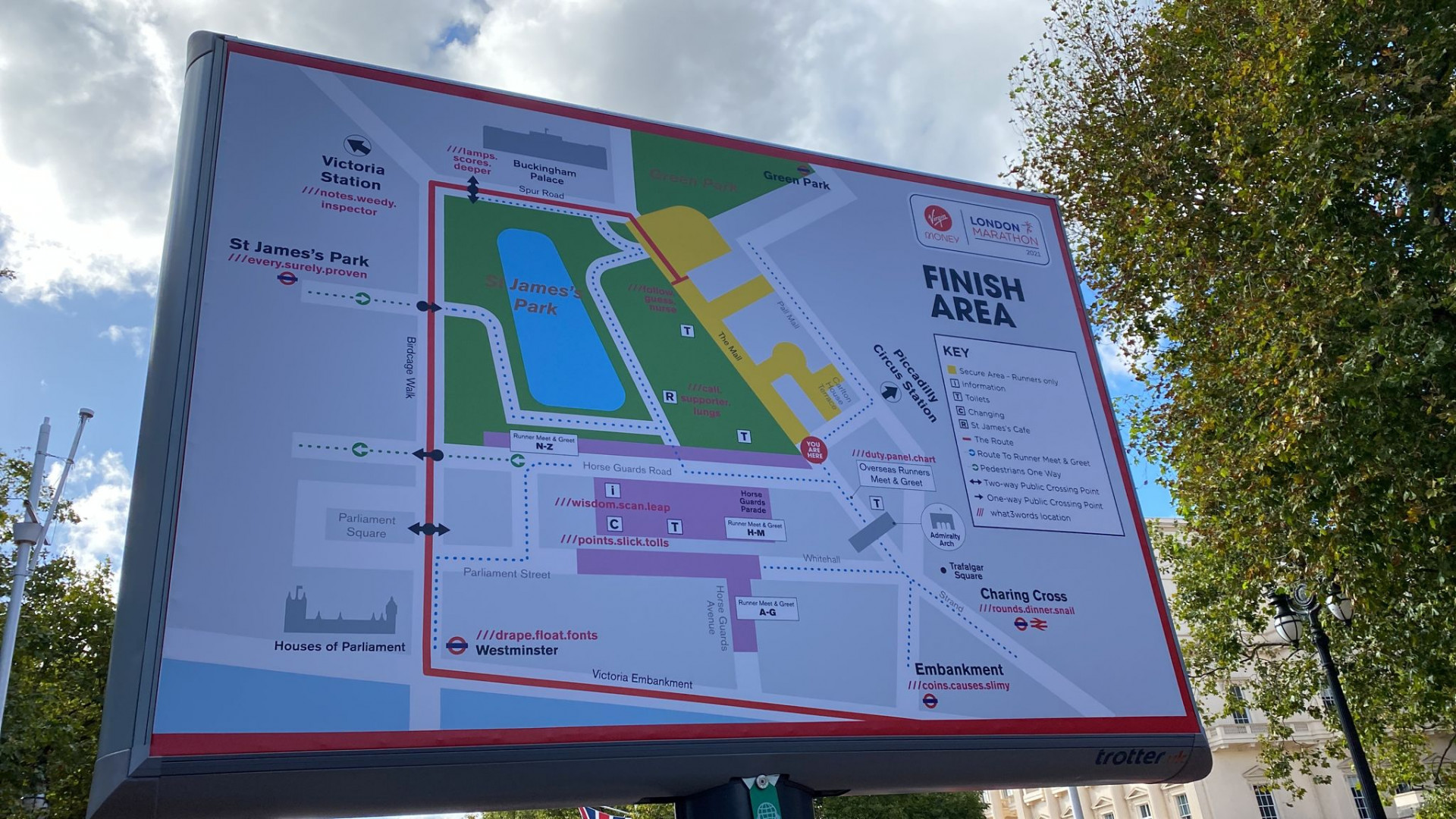
You have arrived at your (precise) destination
Alison: Outside of humanitarian causes, what would be your number one application of what3words?
Giles: There’s two! One is deliveries. As an individual, if you're going for a meeting and you can't find the right entrance it's just a layer of stress that you don't need. If you're a delivery driver doing that a couple of hundred times a day, that adds up. So if you're delivering to a new-build, or an office complex, an industrial estate, or anywhere in the countryside, what3words becomes a really efficient way to make deliveries.
The other one is automotive, and mobility. So we’re seeing a huge amount of traction with car companies building us in. Because what3words is built around voice, and the ability to communicate easily, it makes that whole thing much smoother.
Alison: What’s next for what3words?
Giles: We're adding more languages to the platform. We should reach 50 languages soon. Our intention is that we have as many languages as possible, and so people can navigate anywhere in the world in their choice of language.
Worth noting is that it's a unique system every single time. Because of the homophone challenge, because of the way that we distribute the words, and because actually some words translate into multiple other words. For example, ‘livre’ in French means both ‘pound’ and ‘book’. And so it becomes very difficult to do that. So it's an entirely new system every single time, that our API and our app will recognise.
We want to make the world safer, we want to make it more efficient, we want to make it less frustrating. And we think that a better addressing system can do that. There are billions of people in the world that don't have a proper address and that's a real issue for bank accounts and voting, and human rights.
And so we're keen to be recognised as a global addressing standard in countries around the world. So you see three words on a sign, you see it on a business card, you type it into a search bar. You say it to a vehicle and it's all recognised as an address.
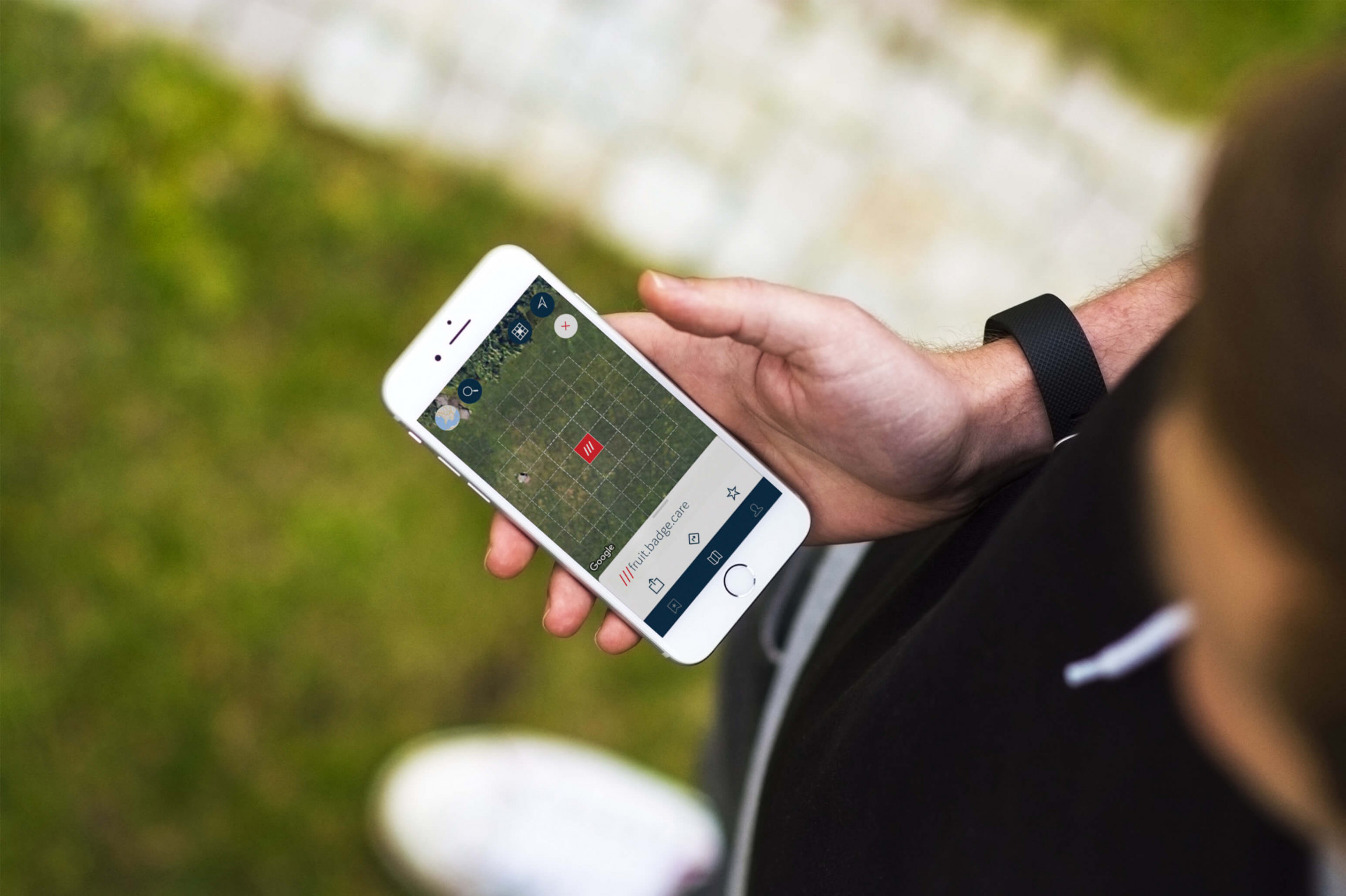
Alison: In terms of wayfinding in the built environment, and multi-floor buildings, do you have any plans to roll out 3D multi-level mapping?
Giles: As we're a GPS based system, we take 2D latitude longitude GPS, and convert it to words. As you get into different heights, it becomes more complex. Do we look at floors or feet? There's a variety of different things to consider. We see people using it as an addition to a street address. So you'd say, "I'm in flat 22, at 47 Kenworth Avenue. The entrance is word word word." Once you're in a building actually wayfinding often becomes a little bit easier. Our system can really help when you're finding the specific entrance and exit.
It’s been used at Wembley Stadium. We've been used at a variety of music events. We were used at Winter Wonderland. They had actually a massive map with the three word addresses of each of the entrances printed on that map. Our app allows you to scan the three words. So you just point your camera at the three words, it recognises the address, and off you go.
We're being used for mass participation events. Not only for people who are watching, but also people attending. Some of the big runs that are now back on, the Great North Run and the London Marathon, are starting to use what3words for the infrastructure to help organise the event, for coordinating staff as well as spectators.
Say it with words. Three of them.
Alison: What are the big challenges going forward?
Giles: I think there are two challenges. One of the challenges we have right now is ingrained human behaviour, we tend to accept that we will need to wave down an Uber because they can’t quite find you. People turning up late. Deliver drivers not being able to find you.
I think one of the other challenges that we have is a future, where everything is automated and digital to digital, and devices auto-locate each other. I think there will always be a human desire and a need to write down something, or to say an actual address.
If you're using a digital map on an app and you don't actually need to tell anybody else about the location you're going to, then it's a digital to digital experience. You don't really need us. But if it does break down and there does need to be a person in that mix somewhere, that's when what3words is useful.
Alison: We have the same issue when it comes to the difference between static wayfinding, such as signage, and digital wayfinding that you can do on your phone. To be able to put a digital map on your phone, and follow it is very convenient. Yet there's something comforting about a static point of reference. On the day your phone battery dies, or you have no network coverage, or you can't get maps to open – that's when you need that static signage. We're a long way from a world where it's completely seamlessly digital and we don't need to worry about static wayfinding.
Giles: I think there's a general assumption that something comes onto the market, or something's invented, and it must instantly replace everything else. I use what3words; I send people a pin; I use a street address; I use all of those things. It's slightly different in different circumstances. Why wouldn't I?
We see the comfort in having a three word address versus a dot on a map, which doesn't have a name, and is kind of ethereal. It's a bit weird. But as soon as someone has the three word address of where they’re going, that gives them a certain amount of comfort.
Alison: There's a sense of permanence, and in a way because language is so important to humans. We do everything we do to communicate. We're social creatures. And having three words, instead of three colors, or three symbols, or three whatever else, provides a sort of comfort. It goes back to the primeval need to tell each other stories.
Giles: There’s definitely beauty in words. I think that people are built to storytell and to see meaning in things. So even though these words are random, you do find people clicking squares along their driveway going, “Yeah, that’s me.” People have even built apps to generate poetry based on the three word address squares that you walk through. It's the beauty of a GPS coordinate, a latitude and longitude, which is incredibly functional, but slightly devoid of personality. So there's a benefit to that, which makes it more memorable.
Alison: In the UK in particular, we love an ‘Acacia Avenue’. We infer meaning from our street address. And it does create a sense of comfort. That’s why there are people whose job it is to worry about getting the names of streets right. Because it has a meaning, and it provides kind of almost a layer of branding, for want of a better word.
Giles: There is an interesting thing in the naming of streets. And obviously, we're used in conjunction with street names, so we don't change the meaning of an area. There's something around democratising addressing. You cannot change our system. You cannot buy words. There's a kind of democracy to it in that it's broadly randomly assigned.
It will be interesting to see if it affects the price of land in certain areas. So for example, dairy.milk.chocolates is in Nebraska. There are some interesting three word combinations out there that might feel particularly fortunate for a country, or they might be particularly important for a brand.
Alison: What applications are you seeing for what3words in the built environment?
Giles: What we're seeing in terms of wayfinding, is a combination of buildings, offices, and apartments starting to use what3words. Developers and construction companies are using it. And then on the other side of the ecosystem, we've got delivery companies and taxi companies accepting a what3words address.
We've got a number of different very good use cases, but there's not one particular use case. It’s actually a kind of universal system that is useful for a variety of purposes.
Alison: And finally: has anyone named a building after the what3words address?
Giles: They have indeed! The Birch (handle.silk.comet), a hotel 30 minutes outside of London, has done exactly that.

